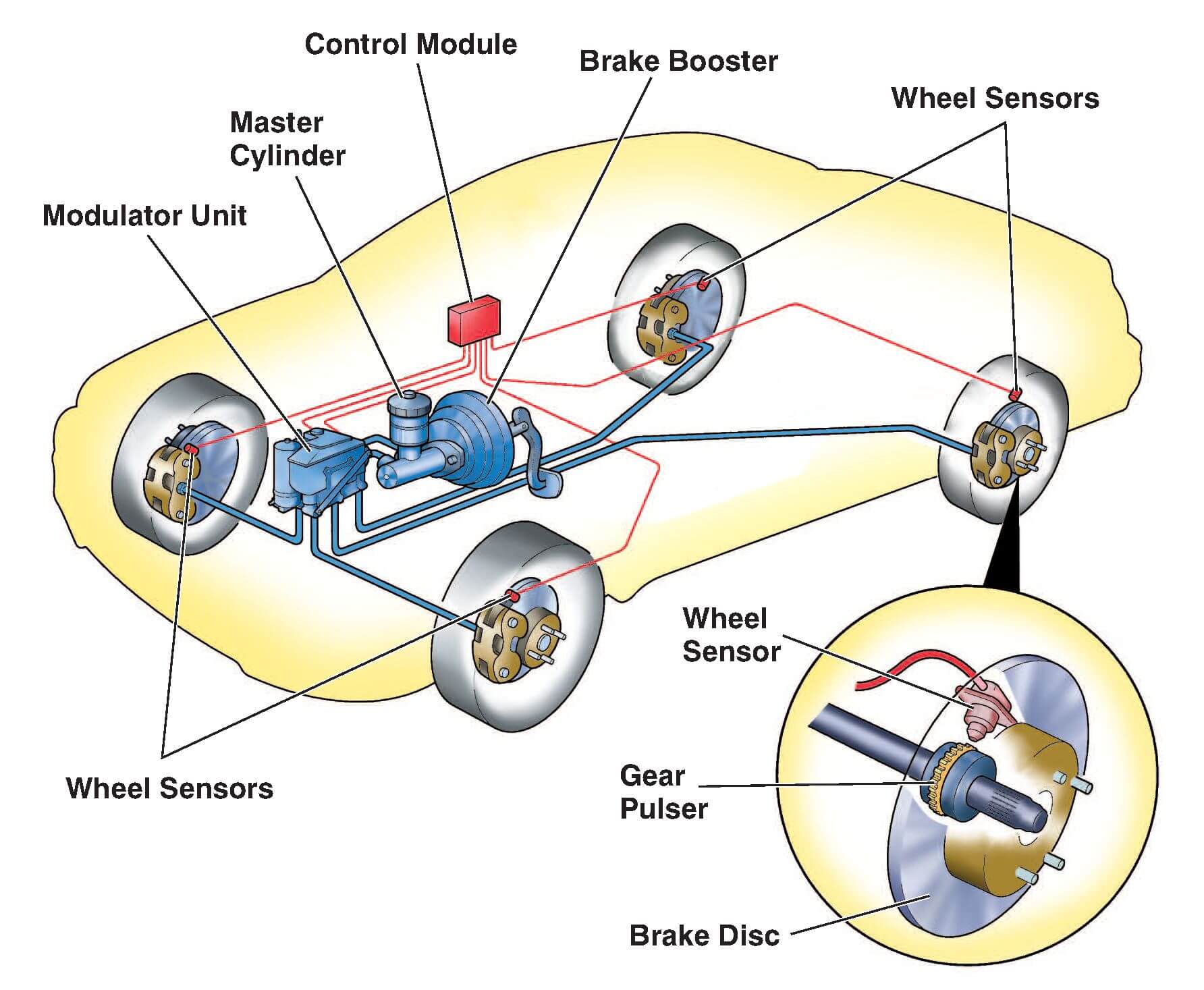What is Anti-Brake System (ABS) in Cars?
Anti-brake system (ABS) is a safety feature in cars that prevents the wheels from locking during braking. This allows the driver to maintain control of the vehicle and avoid skidding.
ABS works by using a series of sensors to monitor the speed of each wheel. When a sensor detects that a wheel is about to lock up, it sends a signal to the ABS control unit, which then reduces the brake pressure to that wheel. This allows the wheel to continue rotating and prevents the car from skidding.
How does ABS work?
ABS works by using a series of sensors, valves, and a control unit. The sensors are mounted on each wheel and measure the wheel speed. The valves are located in the brake lines and control the amount of brake fluid that is sent to each wheel. The control unit is the brains of the ABS system and it decides when to activate the valves.
When you apply the brakes, the ABS control unit monitors the speed of each wheel. If the control unit detects that a wheel is about to lock up, it sends a signal to the valves to reduce the brake pressure to that wheel. This allows the wheel to continue rotating and prevents the car from skidding.
Benefits of ABS
ABS provides a number of benefits, including:
- Shorter stopping distances
- Improved control of the vehicle during braking
- Reduced risk of skidding
- Increased stability during braking on slippery surfaces
Limitations of ABS
ABS is not without its limitations. One limitation is that it can only prevent the wheels from locking up. It cannot prevent the car from skidding if the driver applies the brakes too hard. Another limitation is that ABS can be less effective on slippery surfaces, such as ice or snow.
Is ABS right for you?
ABS is a valuable safety feature that can help you to avoid accidents. It is a standard feature on most new cars, and it is available as an option on many older cars. If you are considering buying a car, be sure to ask if it has ABS. It could save your life.






